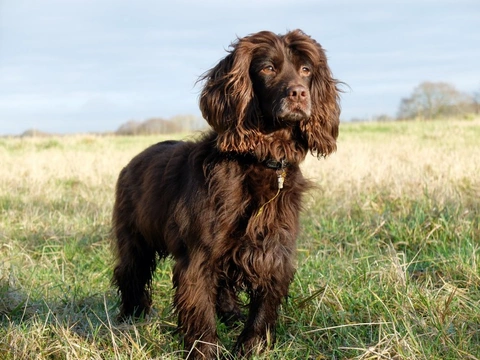
What and how to feed a very active or working dog
If your dog is very active or takes part in a working role or a canine sport, you will probably be all too aware of how unique their needs are when it comes to things like exercise, mental stimulation and general lifestyle. However, dogs that are highly active also need to eat differently to your average domestic pet dog, in order to support their lifestyle and offer the optimum nutrition that dogs at the peak of fitness really need.
Whether you already own a very active or working dog or are considering buying or adopting one, or if you want to get involved in canine sport with your current dog or one that shows promise to do so, it is important to develop a basic understanding of the type of food and nutrition such dogs need, and how to feed them.
In this article, we will look at the specific feeding requirements of working, sporting and generally very active dogs, and how to keep them at their peak to perform at their best. Read on to learn more.
Determining your dog’s activity levels
First of all, your dog’s diet needs to be adaptive, so that you can fine-tune it to match their activity levels. Generally dogs in working roles or that take part in sports will be working towards new skills or goals a lot of the time, and so it is vital to feed your dog a diet that is a good match.
The size and breed of your dog, as well as their age, also need to be taken into account, because of course how much your dog needs to eat will be based on their size and build, as well as how much they do!
If your dog walks for more than an hour a day without getting tired out, is highly active at play and/or does take part in sport or work, or is training for such a role, you can likely fairly say that they are a highly active dog. However, if an hour is about the limit of your dog’s exercise tolerance and they are then tired out for the rest of the day, they probably simply have normal exercise requirements.
More exercise=more calories
It is simple science that the more exercise your dog does, the more calories they will need-and also, working and sporting dogs are generally very intelligent dogs too, and this mental activity uses calories as well!
Getting enough calories is important to support an active lifestyle and the process of learning and executing new skills, but determining how many more calories your dog needs than the average dog can be more challenging.
If you are feeding a mainstream complete diet, this will have feeding guidelines on the packaging, to provide you with a guide-but for highly active dogs, you will need to feed them anything from 5% to 25% more food than a dog leading a normal lifestyle.
There are also special diets designed for very active working or sporting dogs, and these tend to contain more calories and slow-release energy than normal foods, and so you will be able to feed your dog this type of diet more in line with the guidance by size and age.
Protein and nutrition
As well as the quantity of food that you give to your dog each day, you need to ensure that the calories that your dog consumes come in the right form, to support a busy, active day of work or sport.
This means you will need to feed a relatively good quality food to get the right balance of nutrition into your dog-foods that get their energy from sugar, grains and other fillers will soon leave a busy dog flagging, and come with the threat of causing peaks and troughs in your dog’s energy levels throughout the day.
When feeding wet food to your dog, the protein content of the food should be around 7-10%, with a fat content of at least 5% but less than 10%. If feeding a dry food, look for one with a protein content of 30% or more, and a fat content of over 20% but less than 25%.
If your dog’s activity levels drop
If for any reason your dog’s activity levels drop for a while-such as if they become injured, or you decide to wind down what they are doing between competitions or for other reasons-you will need to adjust their food intake accordingly. Otherwise they will soon get fat, and be full of energy that they will not be able to work off.
In order to do this, drop the amount that you feed to your dog back down to the level you would feed to a normal energy dog, and/or change their diet to one that is not designed for highly active dogs. Make changes gradually, and don’t forget to factor treats into your calculations too!



